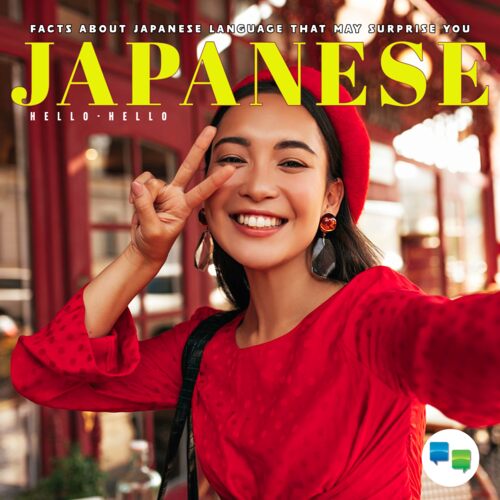The Japanese language, with its unique writing system and complex grammar, has fascinated linguists and language enthusiasts for centuries. Known for its beauty and precision, Japanese holds many interesting quirks and surprises that set it apart from other languages. Whether you’re a beginner or a seasoned learner, here are some fascinating facts about the Japanese language that may surprise you as shared by Hello-Hello one of the leading Japanese language learning app developers for iOS and Android devices in this blog.
Three Writing Systems
One of the most unique aspects of Japanese is its use of three distinct writing systems: Kanji, Hiragana, and Katakana.
- Kanji are characters borrowed from Chinese, each representing a word or concept. There are thousands of Kanji characters, but everyday fluency requires knowledge of about 2,000.
- Hiragana is a phonetic alphabet used primarily for native Japanese words and grammatical functions.
- Katakana is another phonetic alphabet used for foreign loanwords, onomatopoeia, and the names of animals or plants.
Despite using three writing systems, the Japanese combine all three in everyday writing.
Politeness and Honorifics
Politeness is central to Japanese communication, and the language reflects this with its complex system of honorifics. There are various levels of formality depending on the situation and the people involved. For instance, Keigo (respectful language) can be broken down into:
- Sonkeigo (respectful language towards others),
- Kenjougo (humble language when referring to oneself or one’s group),
- Teineigo (polite speech used in everyday situations).
Failing to use the correct level of politeness can be seen as disrespectful or rude, so mastering honorifics is key in Japanese.
Lack of Future Tense
Unlike many other languages, Japanese does not have a specific future tense. Instead, context or time indicators are used to convey when something will happen. For instance, if you’re making plans to go somewhere next week, you might use the present tense, with a time expression like “next week” to clarify the timeframe.
Subject Omission
Another fascinating aspect of Japanese is its frequent omission of subjects. In casual conversation, Japanese speakers often leave out subjects because they are implied from the context. For example, instead of saying “I’m going to the store,” one might simply say, “Going to the store.” This makes conversations shorter and more efficient, but can also be confusing for beginners.
Loanwords From Many Languages
Japanese has borrowed words from a variety of foreign languages, primarily English. These loanwords are written in Katakana and sound distinctively Japanese due to phonetic changes. For example, “computer” becomes “konpyuutaa” in Japanese, and “restaurant” is “resutoran.” Additionally, many words have entered Japanese from Portuguese, Dutch, and French due to historical contact.
No Plurals
Japanese does not differentiate between singular and plural forms of nouns. The word “neko” can mean either “cat” or “cats,” depending on the context. Plurality is usually inferred from the sentence or the use of words like “tachi” or “ra” (to indicate multiple people).
Pitch Accent
Japanese uses a pitch accent system, where the meaning of words can change depending on the pitch used when pronouncing syllables. This is unlike the tonal systems of languages like Chinese, but pitch accent still plays an important role in understanding and being understood in Japanese.
Verb Placement at the End
In Japanese, the verb typically comes at the end of a sentence, unlike in English. For example, “I will eat an apple” becomes “Ringo wo tabemasu” (apple + object particle + eat). This structure can be challenging for those learning Japanese, but it makes the language more flexible and nuanced.
Conclusion
Japanese is a rich, complex language full of surprises. From its unique writing systems to its intricate politeness levels and lack of plurals, there’s always something new to learn. Whether you’re intrigued by its history or fascinated by its structure, Japanese continues to be a rewarding language to study.


